|
This blog entry is in large parts a copy of the H.E.S.S. Source of the Month published in 2022/04. The original article can be found here. In the summer of 2021, the binary star RS Ophiuchi reprised its explosive role as a nova and caused a bright spectacle over the night sky visible to the naked eye. RS Ophiuchi lies in the Galactic neighbourhood of the constellation of Ophiuchus and is a well known recurrent nova, meaning it undergoes an eruption every few years. The latest eruption was marveled at by observers worldwide using everything from binorculars and commercial hobby telescopes all the way up to large collaboration driven instruments. H.E.S.S. was one of these large instruments, which discovered the nova as the first Galactic very-high-energy transient and subsequently captured the evolution of the gamma-ray emission over several weeks [1]. Fig. 1: On the left an artist impression of the RS Ophiuchi system (credit: DESY/H.E.S.S., Science Communication Lab). On the right, the significance maps of RS Ophiuchi as seen by H.E.S.S. Shown is the detection significance above 100 GeV for early (upper plot) and late (lower plot) time H.E.S.S. observations. Novae are astrophysical transient phenomena originating from binary systems consisting of a white dwarf (WD) and a less compact companion star. The distance between the stars in such binary systems is typically comparable to the distance between the Earth and Sun, which allows the more compact WD to accrete matter from its companion star throughout most of the orbit. The accretion process forms a dense layer of hydrogen on the WD’s surface. As the hydrogen layer grows, the pressure and temperature at the bottom of the layer keeps rising until a critical limit is reached. A thermonuclear reaction is then triggered, which blows away matter from the WD in the form of a rapidly expanding shell, similarly to a supernova. The nova is then seen as a bright outburst of light in the sky which fades away after a few weeks. The brightest novae are visible with the naked eye and appear as if a new star came and went. Recurrent novae are known to experience multiple such eruptions at semi-regular intervals of a few years. The well known recurrent nova RS Ophiuchi (RS Oph) was first recorded to erupt in 1898 and has erupted every 9 to 26 years [2], with the latest instance occuring in August of 2021. The nova at its peak reached a visual magnitude of about 4.5, far higher than the binary's usual quiescent magnitude of about 12.5. The eruption was then noticed by amateur astronomers and reported to the wide network of astronomers and astrophysicists [3], triggering numerous follow-up observations worldwide. As a side note: we hope to increase the connections and exchanges with the the amateur astronomy community via our multi-messenger transients platform Astro-COLIBRI. Fig. 2: H.E.S.S. and Fermi-LAT light curves of RS Ophiuchi's 2021 outburst. The decay rates in H.E.S.S. (red squares) and Fermi-LAT (blue circles) are in agreement with each other, suggesting a common origin. T0 marks the time of the peak magnitude in the optical waveband. During the rise of the RS Oph 2021 outburst, telescopes across multiple wavebands reported heightened flux levels coincident with the nova. Following the detection of the outburst with the Large Area Telescope (LAT) on board the Fermi Gamma-ray Space Telescope [4], the H.E.S.S. telescopes rapidly commenced observations of the nova event. The first night of observations by H.E.S.S. on the 9th of August led to a clear detection of the nova, establishing novae as Galactic transients reaching TeV energies for the first time in history. The discovery by H.E.S.S. was reported promptly to the astronomical community, informing everyone of the historical event and prompting further follow-up observations [5]. The MAGIC collaboration independently confirmed the detection of the nova in the very-high-energy (VHE) domain [6]. H.E.S.S. continued to take data of the RS Oph outburst for several weeks and further updated the astronomical community [7]. A pause of observations had to be taken once the night sky became too bright towards full moon, preventing further observations with the H.E.S.S. telescopes. Analysis of the first five nights resulted in a strong signal on the position of the nova (Fig. 1, left). The data taken after the pause of observations, about 17 days after the initial burst, showed that the outburst became much fainter, but was still detectable (Fig. 1, right). The light curve derived over the observed time frame (Fig. 2) shows an initial increase in flux reaching a plateau about two days after the maximum in the GeV band, before starting to decay. A dedicated Fermi-LAT analysis then shows a consistency in the temporal decay between the Fermi-LAT GeV waveband and H.E.S.S. VHE waveband. Fig. 3: Gamma-ray spectrum of RS Ophiuchi’s 2021 outburst. Shown is the spectrum for day one (9 Aug) and day five (13 Aug) of H.E.S.S. observations. The spectra show that the lower energy gamma-ray flux (Fermi-LAT, circles) decreases while the maximal energy (H.E.S.S., squares and triangles) increases. The detection of VHE gamma rays in the RS Oph 2021 outburst by H.E.S.S. has strong implications for the physics in the environment of novae. As the hydrogen layer accreted by the WD detonates and expands, it crashes into the stellar wind of the companion star. The interaction between the expanding shell and the companion wind creates an astrophysical shock. In shocks such as these, the kinetic energy of ejected matter is converted into acceleration of cosmic rays such as protons, electrons and heavier nuclei through a process known as diffusive shock acceleration. Accelerated particles subsequently cool down through interactions with matter and magnetic fields, which in the end leads to emission of photons over several wavebands. The detection of gamma rays in particular gives insight into the efficiency of the particle acceleration. Efficiency of acceleration is key to understanding the origin of the cosmic rays that constantly surround us. By comparing energetics derived from parameters such as the wind speeds and mass loss rates against the measured maximum gamma-ray energies, H.E.S.S. was able to confirm that the efficiency of particle acceleration in the RS Oph 2021 outburst reached the theoretical limit. Additionally, the changes of the nova environment throughout its evolution is reflected in the observed gamma-ray emission (Fig. 3). Over time the spectrum visibly flattens, the GeV emission subsides while the TeV emission increases and reaches higher maximal energies, a behavior well described by an expanding shock. This discovery bodes well for the theoretical origin of Galactic PeV cosmic rays, as these are assumed to originate from supernova remnants that must in turn achieve the theoretical limit with maximal efficiency. An extrapolation of the nova conditions to the related phenomenon of supernovae would be able to support the theory of supernova remnants as the origin of Galactic PeV cosmic rays.
[1] H.E.S.S. Collaboration et al., Science, Vol 376, Issue 6588 , pp. 77-80, DOI: 10.1126/science.abn0567 (2022) and arXiv e-prints 2202.08201 (2022). [2] E. Brandi, C. Quiroga, J. Mikołajewska, O. E. Ferrer, L. G. García, A&A 497, 815 (2009). [3] S. Kafka, Observations from the AAVSO International Database, https://www.aavso.org (2021). [4] C. C. Cheung, S. Ciprini, T. J. Johnson, The Astronomer's Telegram No. 14834 (2021). [5] S. J. Wagner, H. E. S. S. Collaboration, The Astronomer's Telegram No. 14844 (2021). [6] MAGIC Collaboration et al., arXiv eprint 2202.07681 (2022). [7] S. J. Wagner, H. E. S. S. Collaboration, The Astronomer's Telegram No. 14857 (2021).
0 Comments
|
AuthorMyself ;-) Archives
January 2024
Categories
All
|
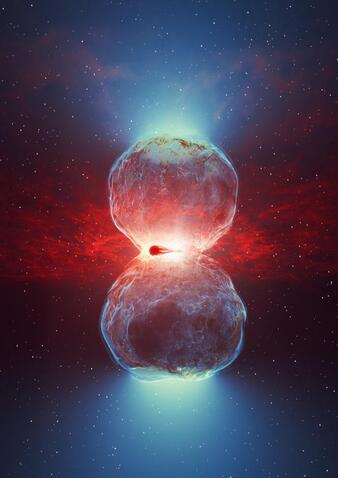
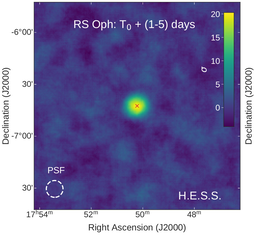
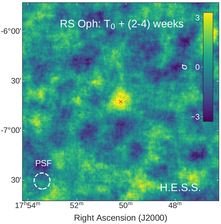
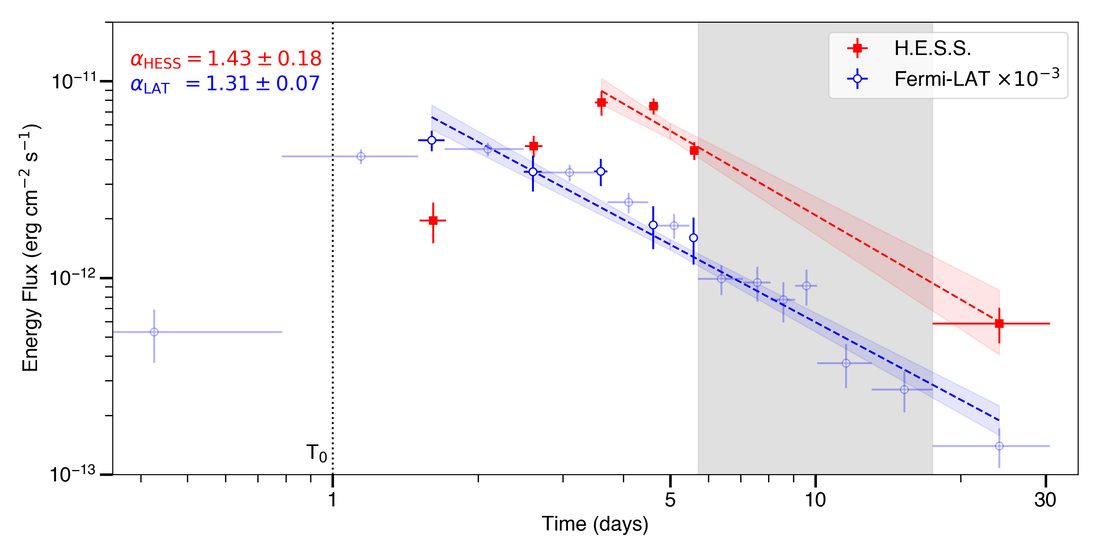
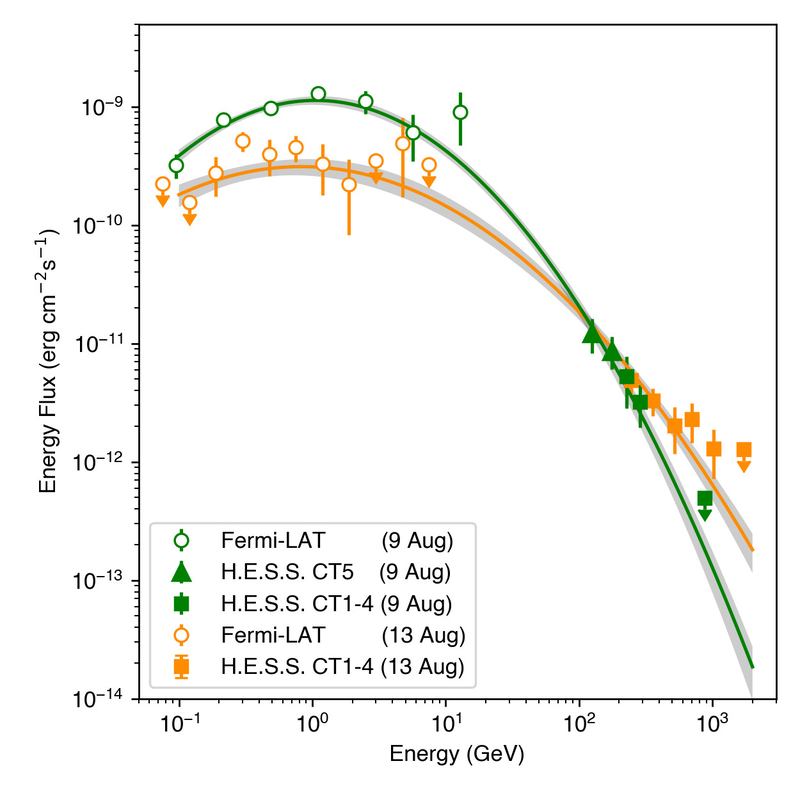
 RSS Feed
RSS Feed